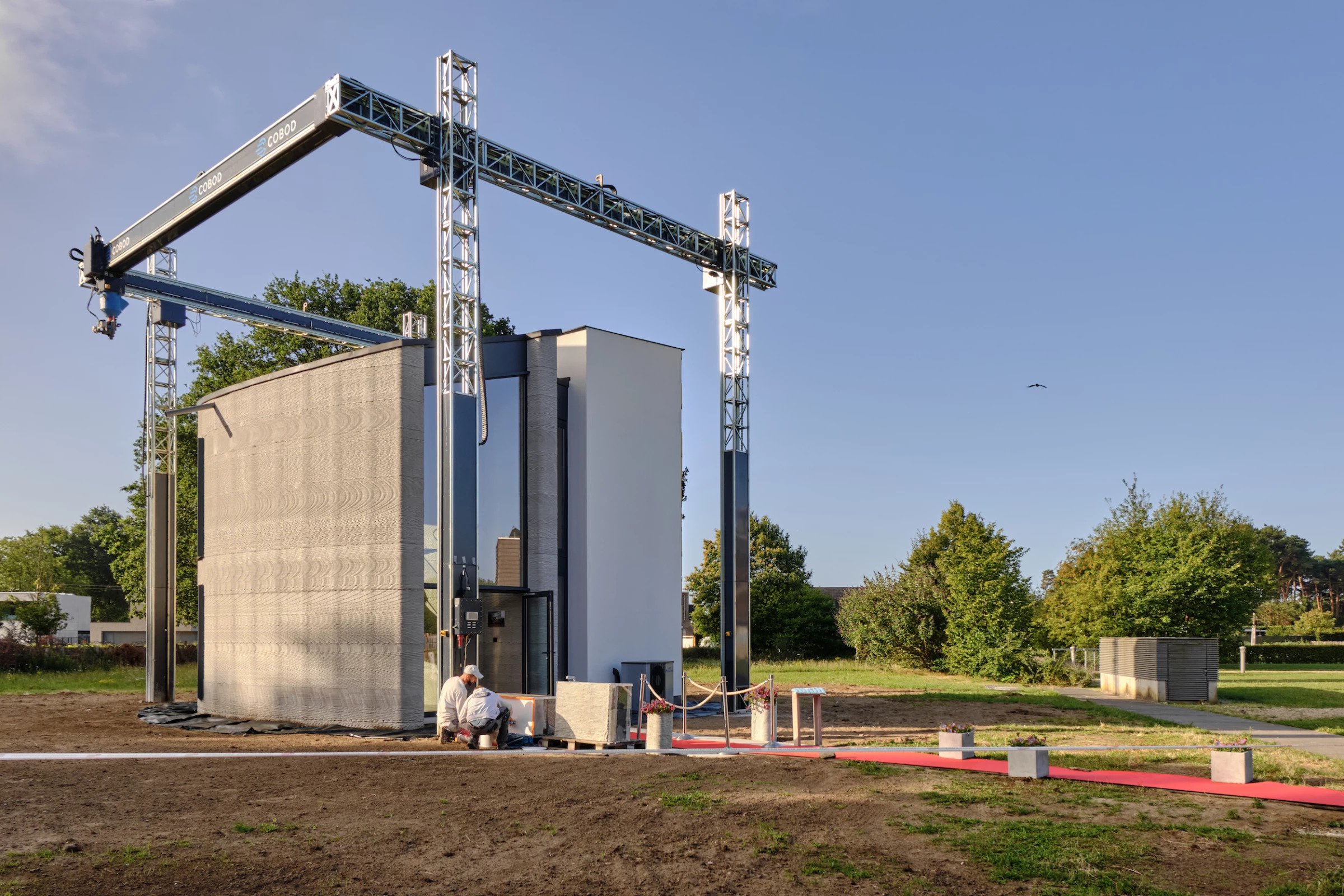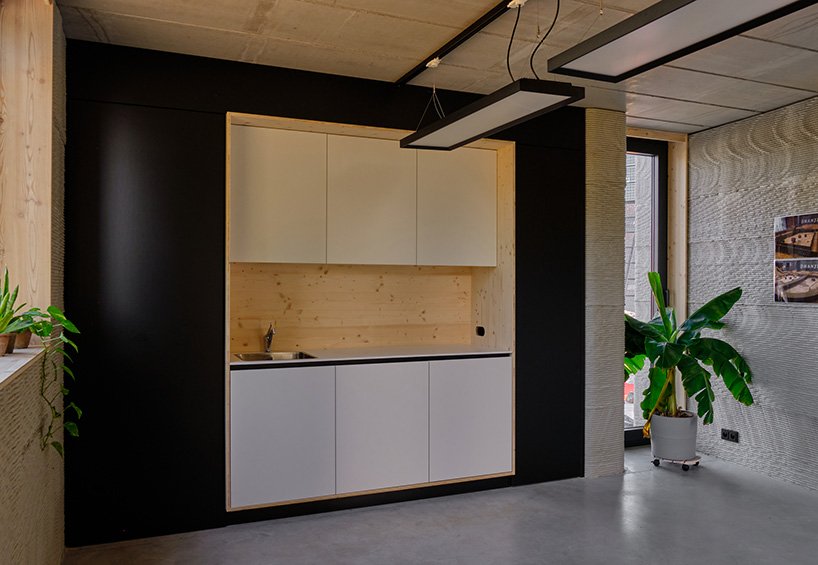
Experts have long predicted that 3D printing will revolutionize the construction industry by making home builds cheaper, faster, and more environmentally-friendly. However, the uptake has been slower than anticipated because 3D technology to create fully-functional homes has been considered lacking. That perception may change soon with the recent unveiling of the world's first two-story home printed in a single piece in Antwerp, Belgium.
"What makes this house so unique is that we printed it with a fixed 3D concrete printer," said Emiel Ascione, project manager at Kamp C construction company, which spearheaded the undertaking. "Other houses that were printed around the world only have one floor. In many cases, the components were printed in a factory and were assembled on-site. We, however, printed the entire building envelope in one piece on-site."

The construction process began in November 2019 with the delivery of a massive 32-foot x 32-foot cement 3D printer, known as BOD2. While it needed some human help to set up, once in operation, BOD2 was fully autonomous, requiring just one person to supervise the build from a nearby computer. Though the actual printing process took a mere three weeks, the house was constructed over a few months to fit in with the school schedules of the students working on the project. Kamp C believes technological advances will make it possible to build similar homes in about two days in the future.
The two-story, 986-square-foot, home, which was unveiled in July 2020, has a small kitchen, two living rooms, a foyer, and a bathroom, as well as numerous human-installed eco-friendly features, such as underfloor heating and solar panels. Open to the public until the end of September, it is part of the European C3PO project to showcase emerging 3D printing technologies and to encourage the continent's construction industry to adopt them in its construction techniques.

"Printing this building is mainly a statement," Ascione told Digital Trends. "It shows the construction industry the accessibility and potential of this technique. The benefits of additive manufacturing are already paying off in a wide range of other industries. It's about time that housing caught up with them."
Kamp C says the 3D printed structure cost about 60 percent less than a typical brick home and was also much sturdier. "The compressive strength of the material is three times higher than the classic rapid building block," Kamp C's Marijke Aerts told Design Boom.
This is not the only exciting 3D printed housing project in the works. In Tabasco, Mexico, US-based nonprofit New Story has teamed up with tech company ICON to build the world's first 3D printed neighborhood. The two-bedroom homes, designed to combat homelessness, are strong enough to withstand natural disasters like hurricanes and earthquakes. The United Arab Emirates (UAE) has also joined the 3D printing movement with the recent completion of a 6,900-square-foot house in Dubai using local materials. At this rate, 3D printers may soon become a fixture at construction sites worldwide.
Resources: ec.europa.eu, newatlas.com, www.kampc.be
